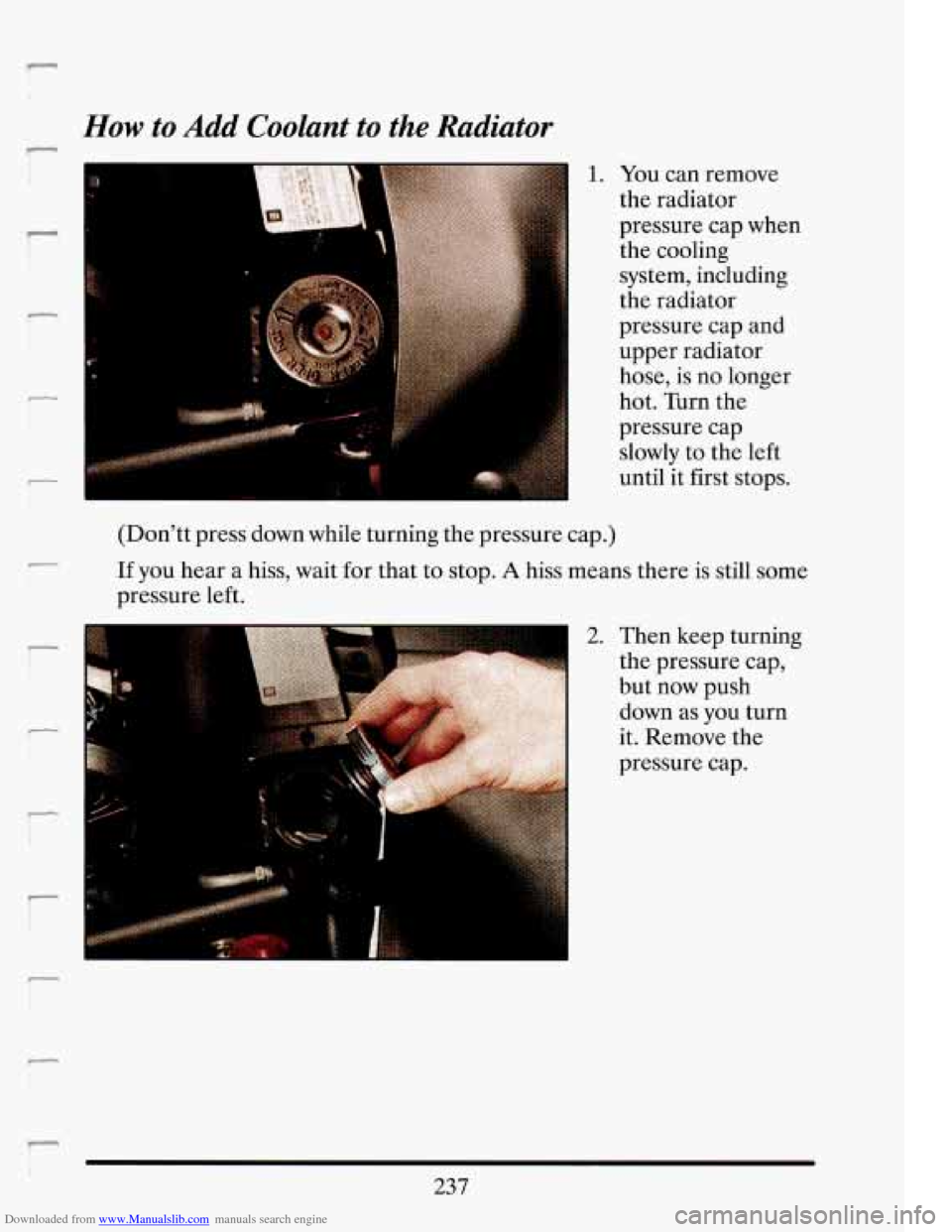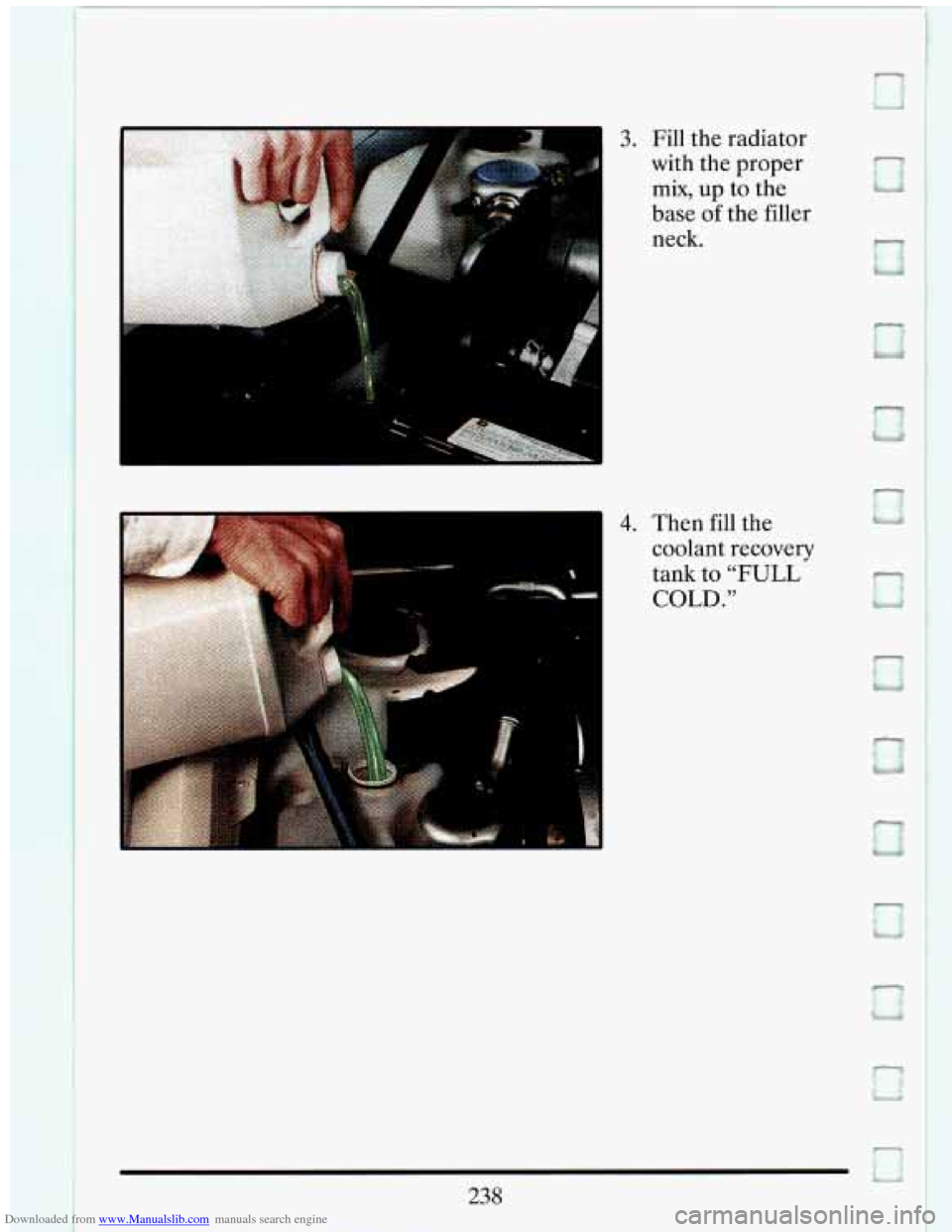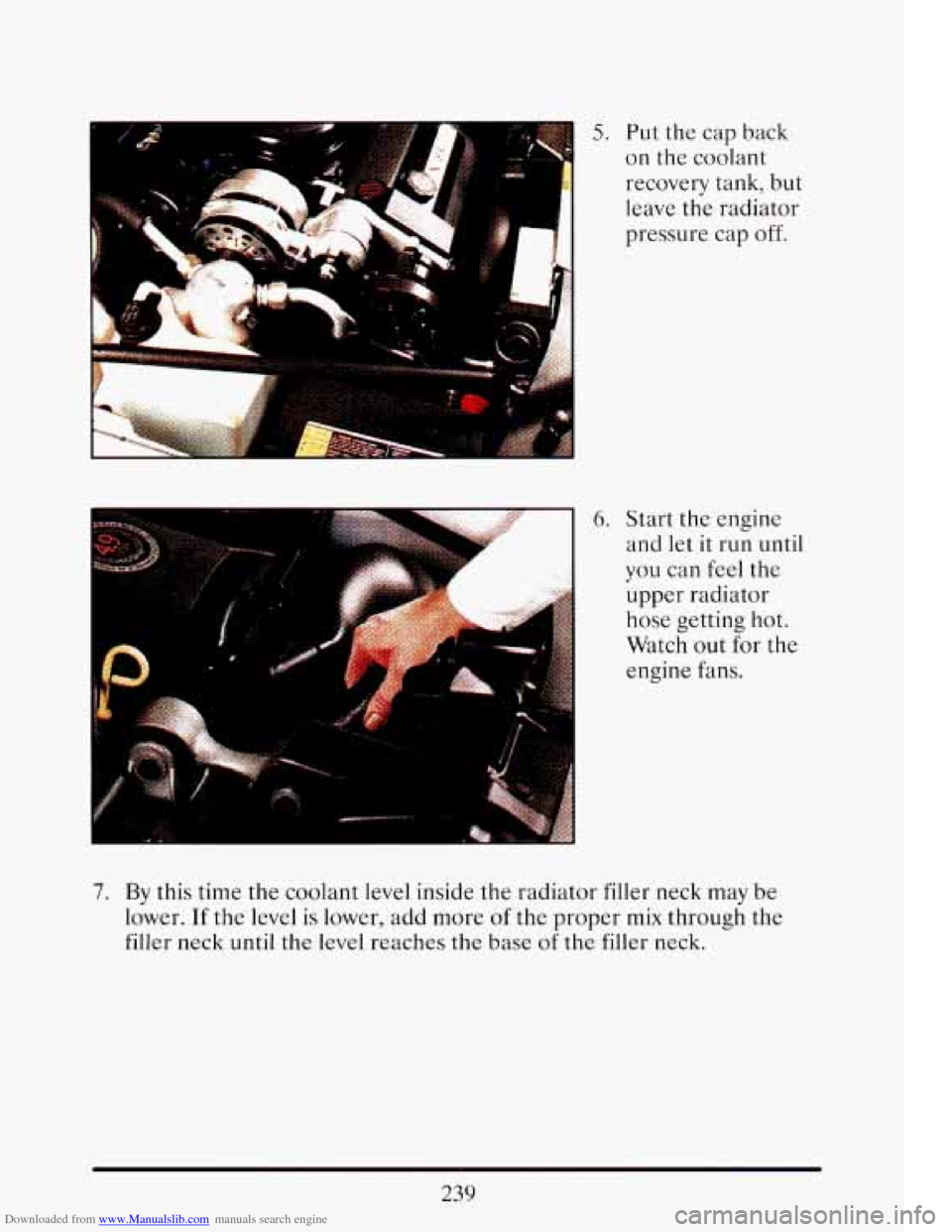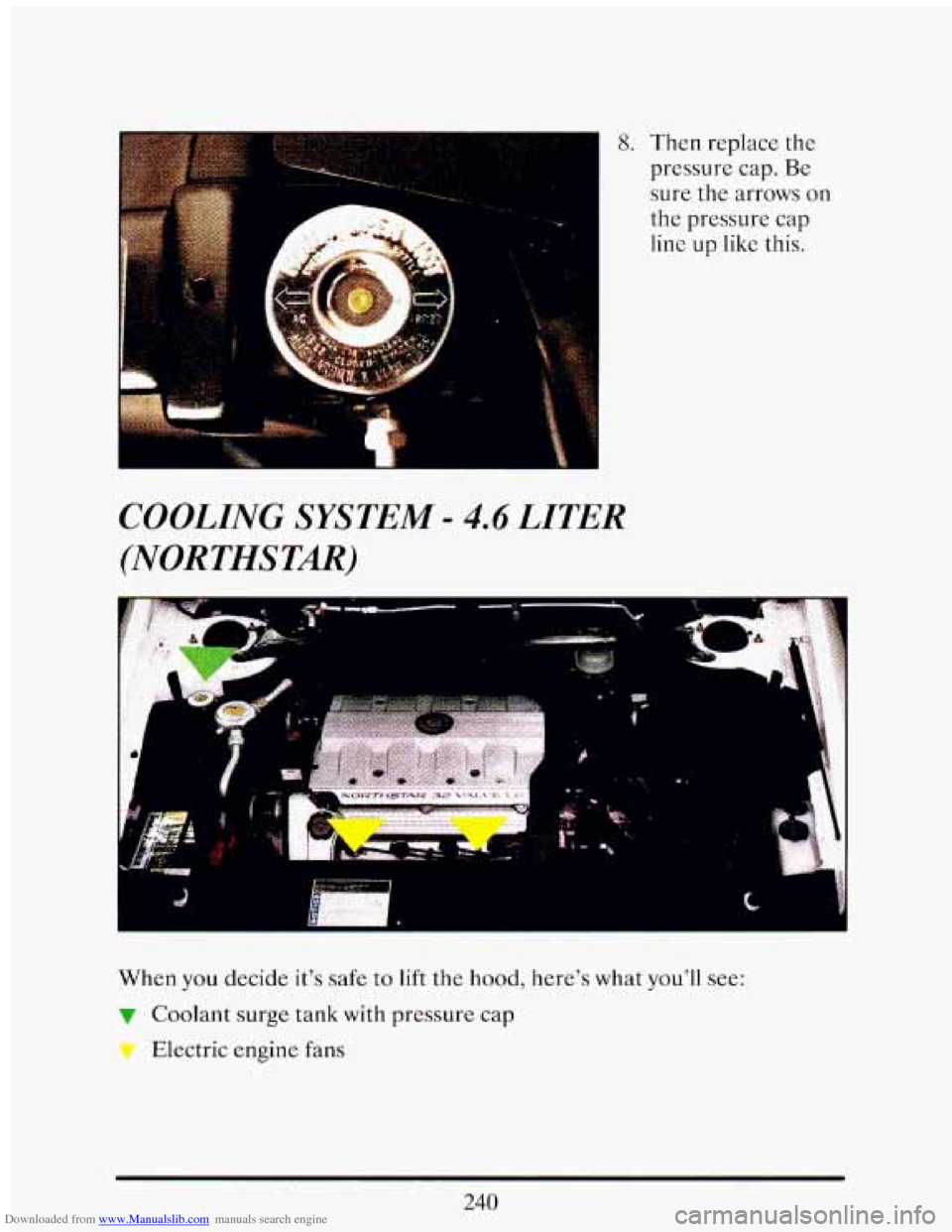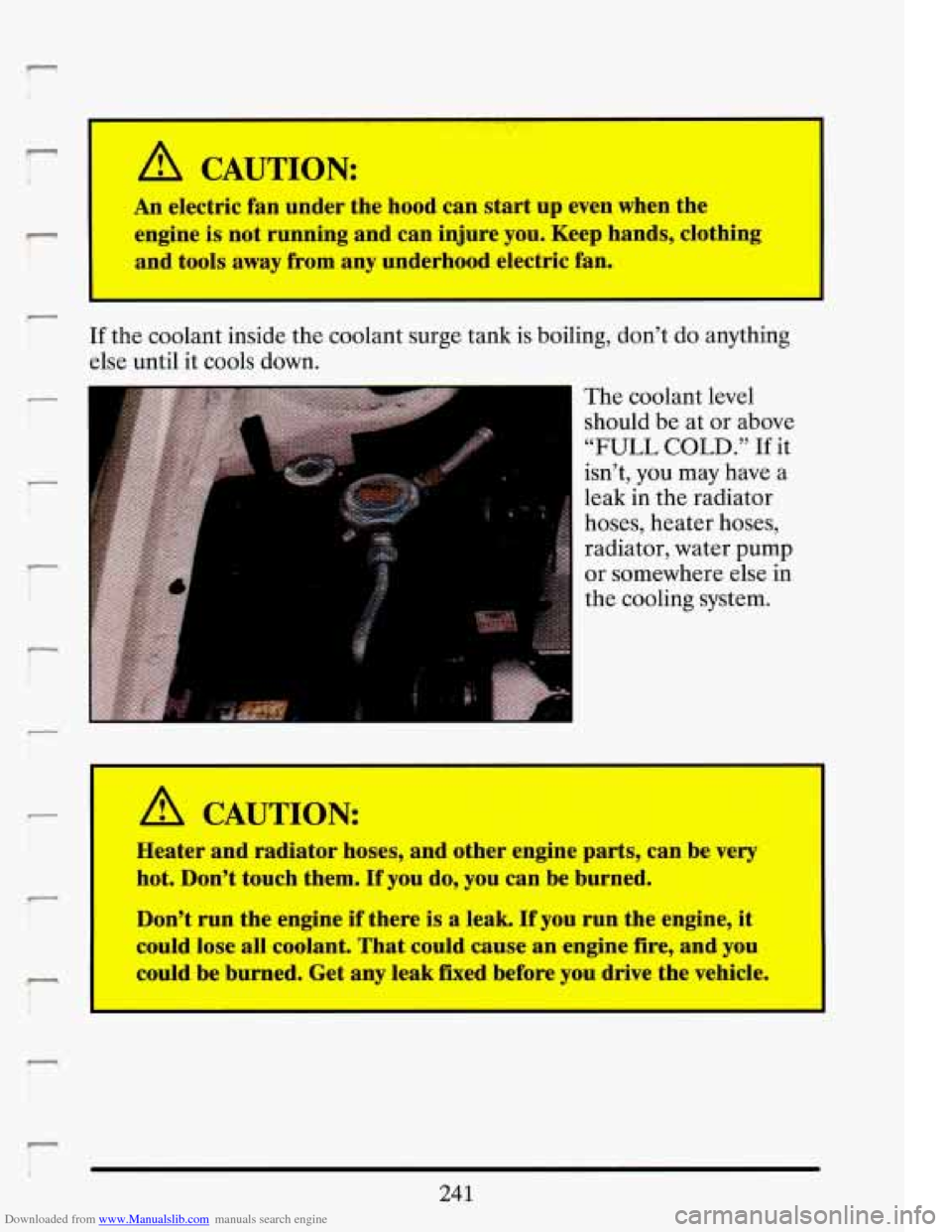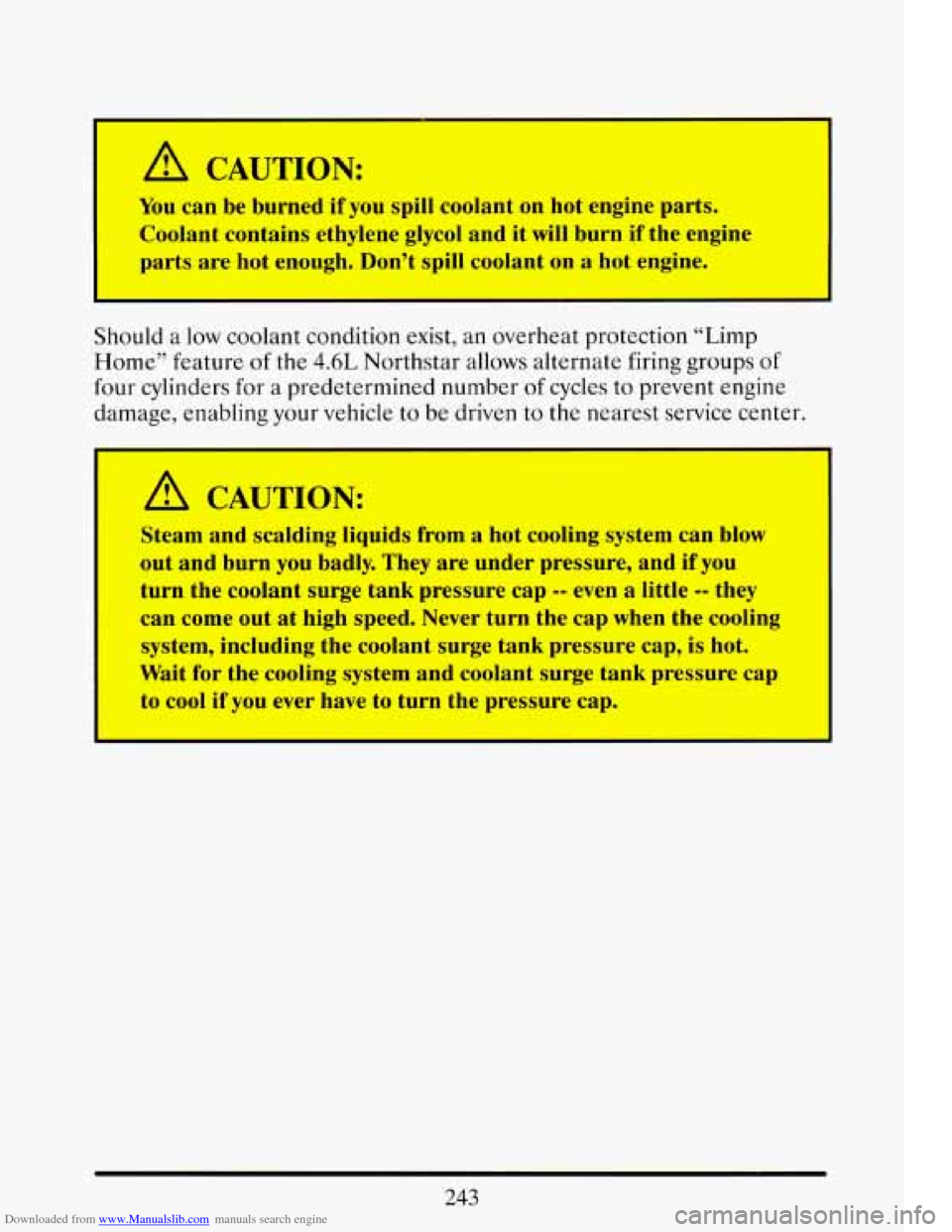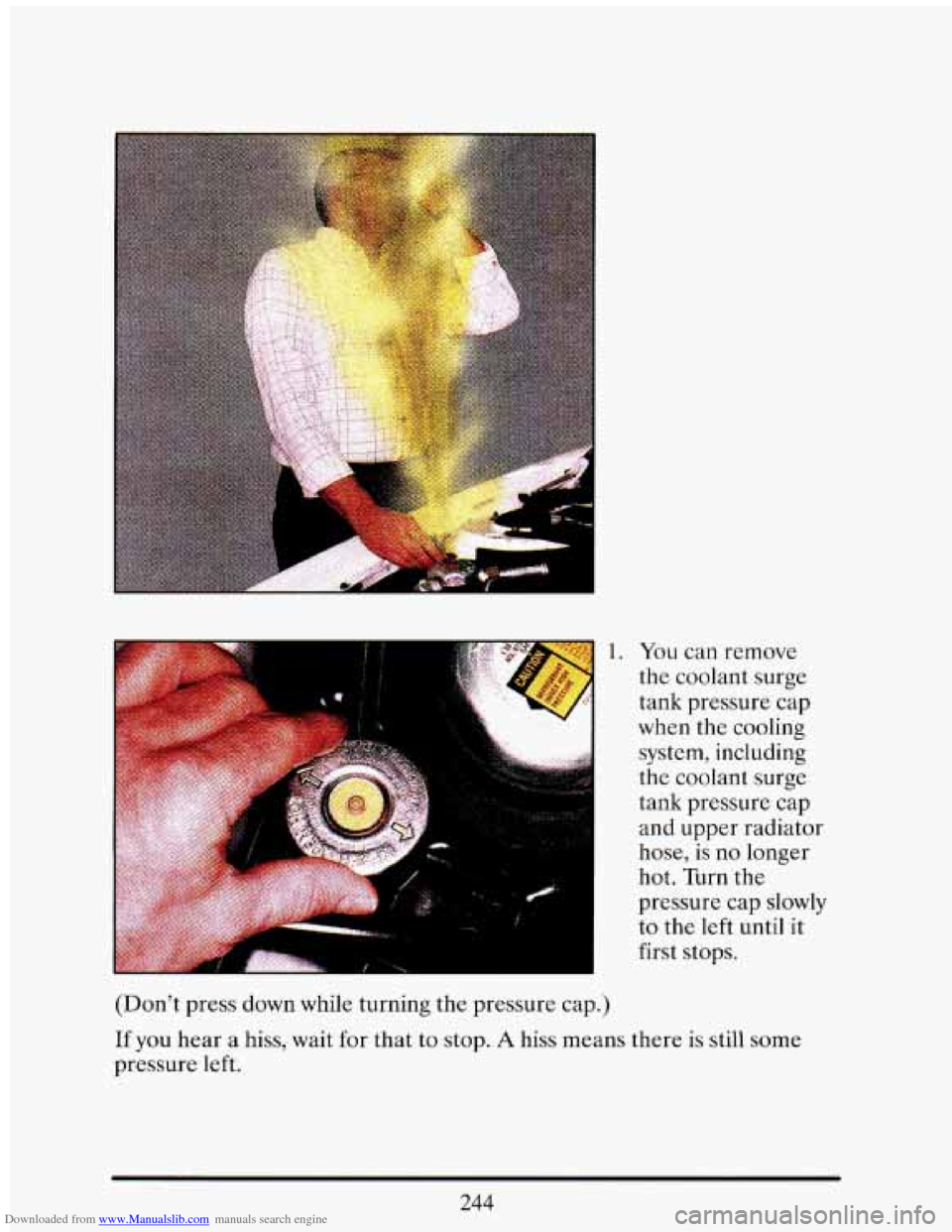CADILLAC ELDORADO 1993 10.G Owners Manual
ELDORADO 1993 10.G
CADILLAC
CADILLAC
https://www.carmanualsonline.info/img/23/7978/w960_7978-0.png
CADILLAC ELDORADO 1993 10.G Owners Manual
Trending: MPG, fuel pump, Engine repair, lumbar support, refrigerant type, oil additives, washer fluid
Page 251 of 398
Downloaded from www.Manualslib.com manuals search engine R
How to Add Coolant to the Radiator
-
1. You can remove
the radiator
pressure cap when
the cooling
-I
1
(Don’tt press down while turning the pressure cap.)
If you hear a hiss, wait for that to stop. A hiss means there is still some
pressure left.
2. Then keep turning
the pressure cap,
but now push
down as you turn
it. Remove the
pressure cap. system, including
the radiator
pressure cap and
upper radiator
hose, is no longer
hot. Turn the
pressure cap
slowly to the left
until it first stops.
237
Page 252 of 398
Downloaded from www.Manualslib.com manuals search engine 3. Fill the radiator
with the proper
mix, up to the
base of the filler
neck.
4. Then fill the
coolant recovery tank to
“FULL
COLD.’’
238
Page 253 of 398
Downloaded from www.Manualslib.com manuals search engine 5. Put the cap back
on the coolant
recovery tank, but
leave the radiator
pressure cap off.
6. Start the engine
and let it run until
you can feel the
upper radiator
hose getting hot.
Watch out for the
engine
fans.
7. By this time the coolant level inside the radiator filler neck may be
lower.
If the level is lower, add more of the proper mix through the
filler neck until the level reaches the base
of the filler neck.
239
Page 254 of 398
Downloaded from www.Manualslib.com manuals search engine _. . .._ .. - I *-
8. Then replace the
pressure cap. Be
sure the arrows on
the pressure cap
line
up like this.
COOLING SYSTEM - 4.6 LITER
(NORTHSTRR)
I
I
I
4
When you decide it’s safe to lift the hood, here’s what you’ll see:
Coolant surge tank with pressure cap
v Electric engine fans
240
Page 255 of 398
Downloaded from www.Manualslib.com manuals search engine T
I A CAUTION:
An electric fan under the hood can start up even when the
engine
is not running and can injure you. Keep hands, clothing
and tools away from any underhood electric fan.
If the coolant inside the coolant surge tank is boiling, don’t do anything
else until it cools down.
r
/1
I
r
I-
= The coolant level
~ should be at or above
“FULL COLD.” If it
isn’t, you may have a
leak in the radiator
hoses, heater hoses,
radiator, water pump
or somewhere else
in
the cooling system.
A CAUTION:
Heater and radiator hoses, and other engine parts, can be very
hot. Don’t touch them.
If you do, you can be burned.
Don’t run the engine if there is a leak.
If you run the engine, it
could lose all coolant. That could cause an engine fire, and you
could be burned. Get any leak fmed before you drive the vehicle.
241
Page 256 of 398
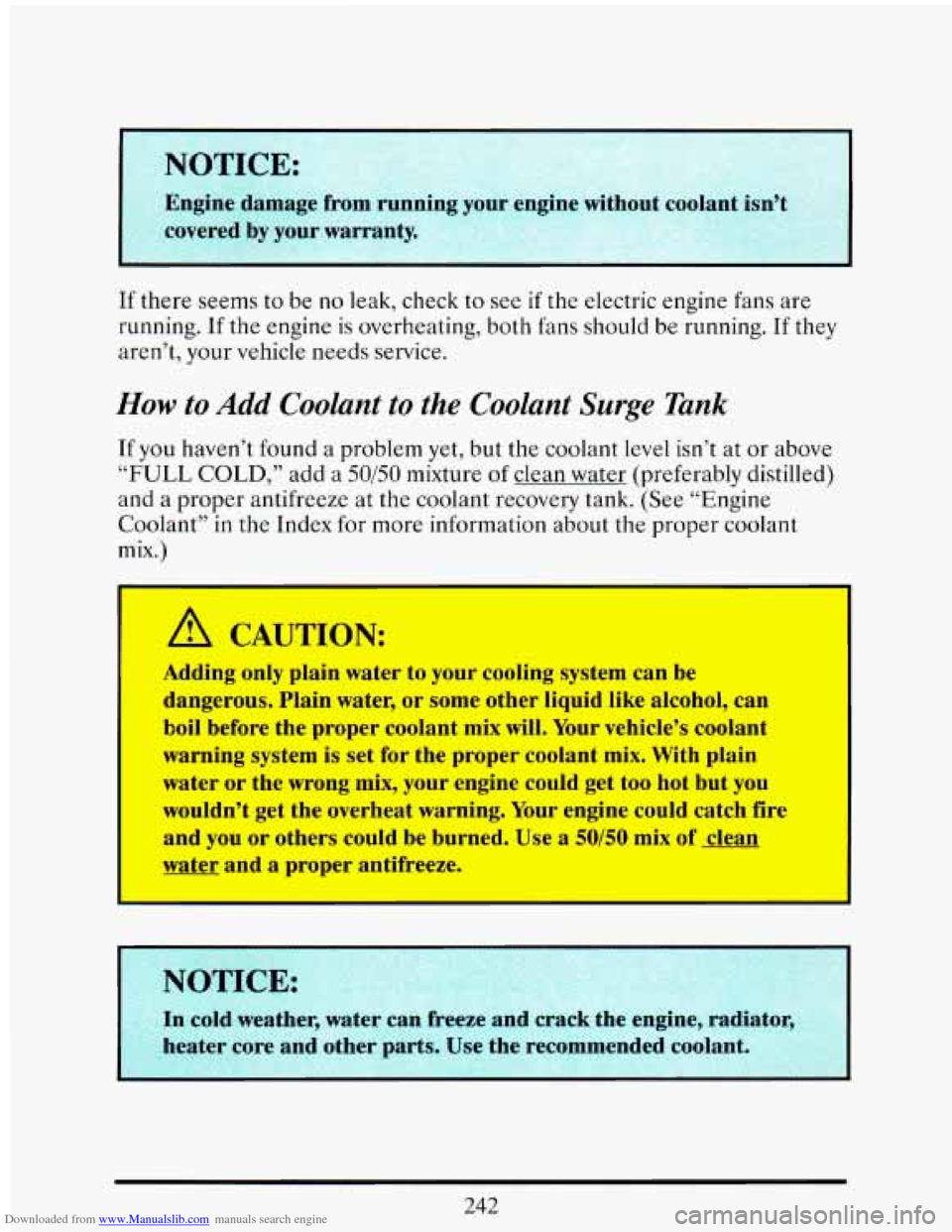
Downloaded from www.Manualslib.com manuals search engine If there seems to be no leak, check to see if the electric engine fans are
running.
If the engine is overheating, both fans should be running. If they
aren’t, your vehicle needs service.
How to Add Coolant to the Coolant Surge Tank
If you haven’t found a problem yet, but the coolant level isn’t at or above
“FULL
COLD,” add a 50/50 mixture of clean water (preferably distilled)
and a proper antifreeze at the coolant recovery tank. (See “Engine
Coolant” in the Index for more information about the proper coolant
mix.)
I
A CAUTION:
Adding only plain water to your cooling system can be
dangerous. Plain water, or some other liquid like alcohol, can
boil before the proper coolant mix will. Your vehicle’s coolant
warning system is set for the proper coolant mix. With plain
water or the wrong mix, your engine could get too hot but you
wouldn’t get the overheat warning. Your engine could catch fire
and you
or others could be burned. Use a 50/50 mix of clean
water -nd
a proper antifreeze.
242
Page 257 of 398
Downloaded from www.Manualslib.com manuals search engine -
A CAUTION:
You can be burned if you spill coolant on hot engine parts.
Coolant contains ethylene glycol and
it will burn if the engine
parts are hot enough. Don’t spill coolant on
a hot engine.
Should a low coolant condition
exist, an overheat protection “Limp
Home” feature of the
4.6L Northstar allows alternate firing groups of
four cylinders for a predetermined number of cycles to prevent engine
damage, enabling your vehicle
to be driven to the nearest service center.
I
A CAUTION
Steam and scalding liquids from a hot cooling system can blow
out and burn you badly. They are under pressure, and
if you
turn the coolant surge tank pressure cap
-- even a little -- they
can come out at high speed. Never turn the cap when the cooling
system, including the coolant surge tank pressure
cap, is hot.
Wait
for the cooling system and coolant surge tank pressure cap
to
cool if you ever have to turn the pre;.=we cap.
243
Page 258 of 398
Downloaded from www.Manualslib.com manuals search engine -
-i i'
You can remove
the coolant surge
tank pressure cap
when the cooling
system, including
the coolant surge
tank pressure cap and upper radiator
hose, is
no longer
hot. Turn the
pressure cap slowly
to the
left until it
first stops.
(Don't press down while turning the pressure cap.)
244
Page 259 of 398
Downloaded from www.Manualslib.com manuals search engine c
the pressure cap,
but now push down
as you turn it.
Remove the
pressure cap.
.-m" .- A
./ .
3. Fill the coolant
surge tank with the
proper mix, up
to
the base of the
filler neck.
245
Page 260 of 398
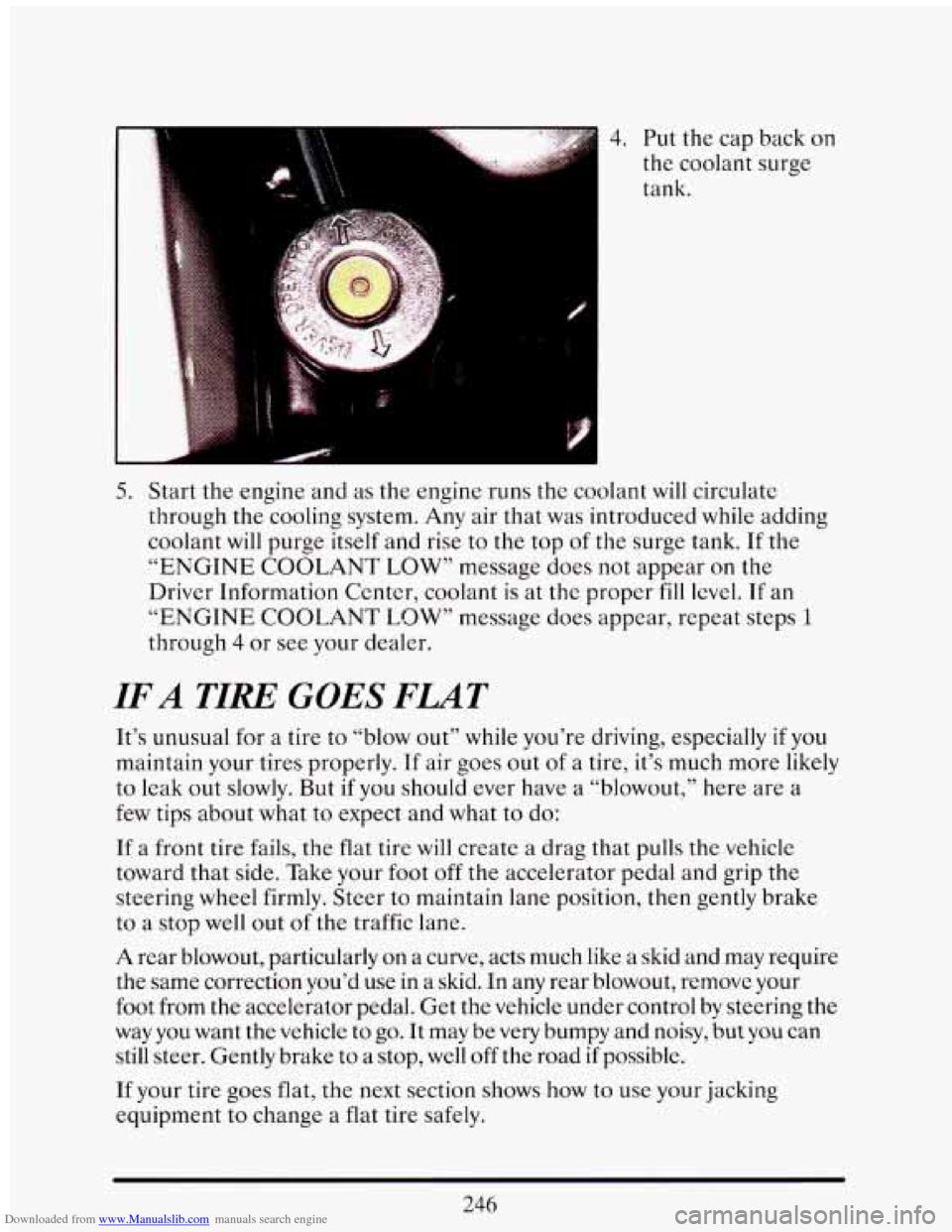
Downloaded from www.Manualslib.com manuals search engine 4. Put the cap back on
the coolant surge
tank.
5. Start the engine and as the engine runs the coolant will circulate
through the cooling system. Any air that was introduced while adding
coolant will purge itself and rise to the top of the surge tank.
If the
“ENGINE COOLANT LOW” message does not appear on the
Driver Information Center, coolant is at the proper
fill level. If an
“ENGINE COOLANT LOW” message does appear, repeat steps
1
through 4 or see your dealer.
IFA TIRE GOES FLAT
It’s unusual for a tire to “blow out7’ while you’re driving, especially if you
maintain
your tires properly. If air goes out of a tire, it’s much more likely
to leak out slowly. But if you should ever have a “blowout,” here are a
few tips about what to expect and what to do:
If a front tire fails, the flat tire
will create a drag that pulls the vehicle
toward that side. Take your foot off the accelerator pedal and grip the
steering wheel firmly. Steer to maintain lane position, then gently brake
to
a stop well out of the traffic lane.
A rear blowout, particularly on a curve, acts much like
a skid and may require
the same correction you’d use in a skid. In any rear blowout, remove your
foot from the accelerator pedal. Get the vehicle under control by steering the
way you want the vehicle
to go. It may be very bumpy and noisy, but you can
still steer. Gently brake to
a stop, well off the road if possible.
If your tire goes flat, the next section shows how to use your jacking
equipment to change a flat tire safely.
246
Trending: automatic transmission fluid, steering, remove seats, lock, windshield wipers, lights, spark plugs
